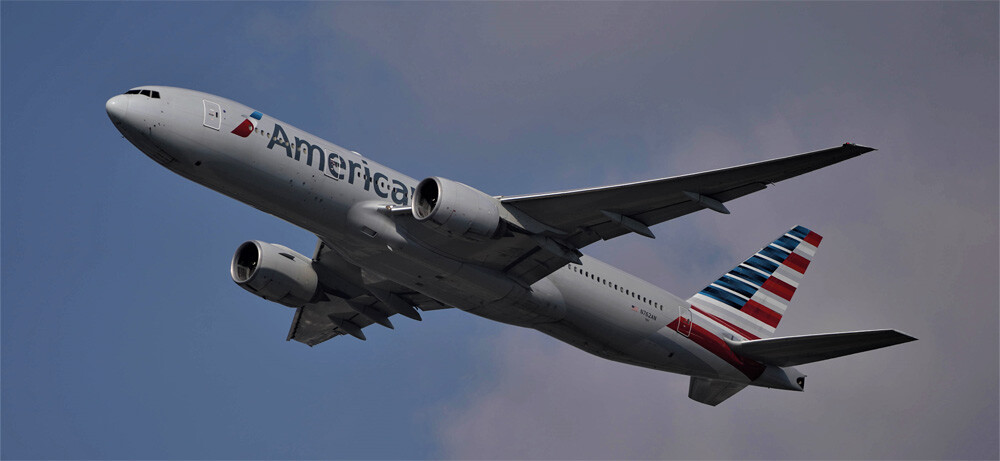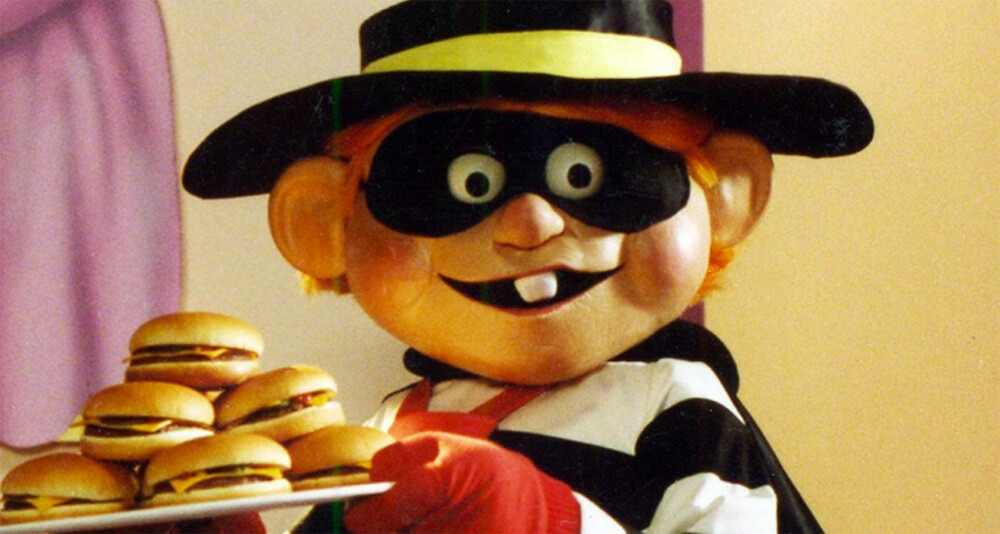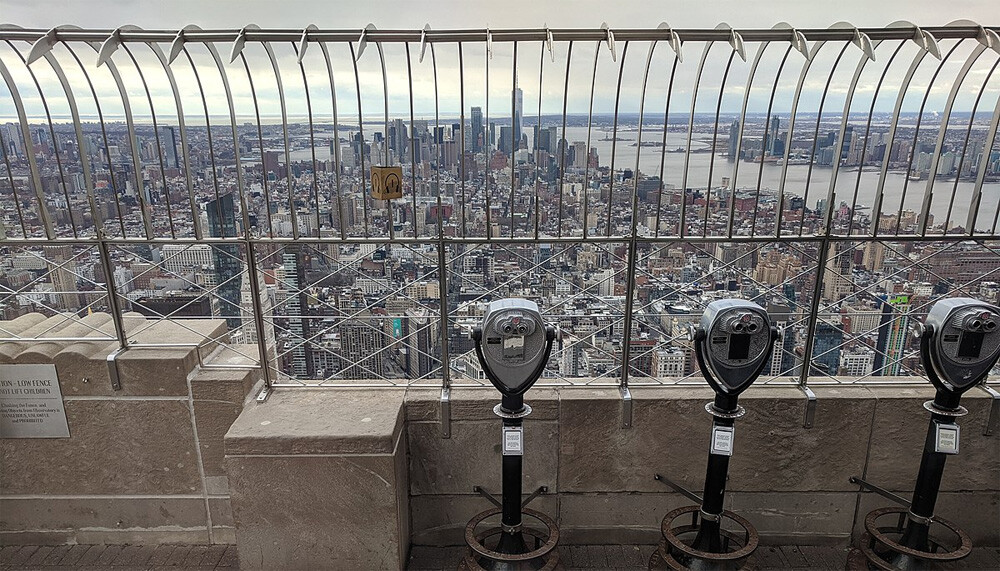5 Strange Ways Companies Really Make Their Money

Sometimes, companies seem to earn no money at all, leaving us outsiders puzzling over what the heck’s really going on. Maybe the companies just write it off, we say. (Write it off what? We don’t know, but they know, Jerry.) Maybe this is a clear case of money laundering—again, we can’t say exactly who is laundering what for whom, but our suspicions remain.
With some of these cases, the answer is the company is making money, just not how we’d expect.
Airlines Actually Lose Money Flying Passengers
Don't Miss
Airlines sure like to fleece their customers, right? The ticket alone costs plenty, and then come all the fees: seat assignment fees, unaccompanied minor fees, special fees for blankets to cover sleeping men’s erections, and more. And yet, even with all that, a carrier like American Airlines will spend more per passenger per mile (on fuel, labor, maintenance, etc.) than they earn. The very business of carrying passengers loses them money.

While that might sound like a failing airline or a broken business model, airlines like this still do make money. They do so by issuing their own currency. No, not crypto. We’re talking airline miles, which began as a simple rewards program then grew into something much more.
Originally, miles worked like any loyalty program. The airline gave you points for your repeat business, you could exchange those points for future tickets, and you thought you were saving money this way, but the airline profited by encouraging you to buy more tickets from them. Then other companies, like car rental agencies and credit cards, partnered with airlines, offering you airline miles as rewards for using their businesses.

These other companies pay the airlines for each mile they issue this way. And they pay the airline a lot more than the mile will cost the airline if you redeem it for a flight (if you redeem it—many miles are never redeemed). This all means that the airline makes huge amounts of money through issuing this currency, or by issuing a promise that they know they won’t have to fulfill.
With the biggest American airlines, their subsidiaries that administer the miles programs are worth more than the entire parent company. Worth more than a parent company whose value includes the miles program, because without the miles program, the airline is worth less than nothing, sometimes negative tens of billions of dollars. The flights are a loss leader, like Costco hotdogs or rotisserie chickens (only way less tasty, Jerry).
Utilities Don’t Make Their Money Selling Electricity
You know that when you pay your utility bill, some of that money must go to fossil fuel drillers. After all, every time someone accidentally nukes a couple oil countries, the price of oil rises worldwide, so just as you have to pay your utility company more, the utility too must be paying more for fuel. Still, you assume the utility company, whom you hate, must be getting pretty rich off all that electricity they’re selling you.

And yet the way the company makes money is more complicated than that. The typical utility provider in the United States works kind of like a private company but also kind of not like a private company. They have a monopoly—you can’t just switch to a different company for electricity. And because they have a monopoly, the government does not let them simply set their own prices. If they could set their own prices, they’d triple their rates tomorrow, and you’d have no alternative but to pay them because there’s no free market.
The prices they charge you are instead set by public utility commissions, state regulatory agencies. They start by deciding how much the company should be allowed to profit (the “revenue requirement”), and they work backwards from there to set the company’s rates. To calculate that revenue requirement, they look at the company’s expenses. Specifically, they look at how much the company spends on building new infrastructure.
This puts the company in a bizarre position. The way for them to make money isn’t to sell you more electricity (you’ll notice very few ad campaigns from your local utility provider suggesting you turn your A/C on full blast). Instead, they should seek a higher revenue requirement. They do this by appearing in front of commissions in meetings called rate cases and pleading by pointing out all the new infrastructure they built. Maybe the new infrastructure won’t actually help them make electricity in the best way. Maybe the new stuff distracted them from fixing the old stuff, endangering everyone. But they built some new infrastructure, dammit, and it cost them, so they need to charge more.

“I don’t know!”
Cracked elder statesman Cody Johnston talked about this in detail in a recent video. The rest of the video is about the problems of utility companies being private businesses, but you’ll notice that this specific “to each according to their need” situation sounds like a horror tale out of the Soviet Union. Picture the hungry Mikhailov family kidnapping a bunch of kids off a snowy street. “Claiming a larger family is the only way to raise our flour ration!” says Boris, as he marches them to the Council.
When You Use Duolingo, You Provide Translation Services For Them
People were blown away when Duolingo debuted a decade ago. It was an app that taught you a foreign language, just like those classes you can sign up for, but it was free? What sorcery was this?
Today, of course, we’re a little more savvy about how free apps work. An app like that is probably coasting on investment cash until it captures the entire market, at which point it will shift to its true goal: murder.

Duolingo actually had another source of income. Progress a little bit into your course, and the app would give you the option of translating a real-world document. You know, for practice, just as you might have to translate something as homework in Spanish class. Only, Duolingo then took your translation and sold it to the creator of the original document (CNN or Buzzfeed, for example), so they could use that as the text’s official translation on foreign language versions of their site.
Naturally, one novice language student’s translation won’t be very reliable. But get a few thousand students translating the same document, then send an algorithm over it to find what sentences everyone agrees on, and you wind up with a fairly accurate translation. More accurate than sticking the text into Google translate anyway, and while it’s not as good as hiring someone who’s actually bilingual, it costs Duolingo nothing.

This might remind you of something else online that ostensibly tests you but also crowdsources labor. When you fill out a CAPTCHA, clicking traffic lights or dogs with hats, you’re proving you’re human through your ability to identify images. But during some rounds of these tests, they aren’t assessing your inputs at all but instead just absorbing them without question and sending them to robots to train them how to identify images.
That similarity’s no coincidence. Luis von Ahn, cofounder and CEO of Duolingo, also founded reCAPTCHA.
McDonald’s Is Just One Big Landlord
“Ladies and gentlemen, I’m not in the hamburger business,” said McDonald’s CEO Ray Kroc to a class of Harvard MBAs one time. “My business is real estate.” Other versions of the story attribute the quote to McDonald’s CFO Harry J. Sonneborn. Still others give Kroc a version of the quote that says something totally different, like “We’re not in the hamburger business, we’re in show business,” or “We’re not a hamburger business selling to people. We’re a people business selling hamburgers.”
So, maybe that quote’s not real at all. Still, “we’re in the real estate business” is a surprisingly accurate summation of how McDonald’s makes money.

The world has around 40,000 McDonald’s restaurants, but McDonald’s the company operates less than 10 percent of those. The others are franchises. That means someone pays McDonald’s for the rights to run a McDonald’s restaurant, and buys supplies from McDonald’s, but that local businessperson is the one who runs the store. They’re on the hook for expenses, and the employees work for that manager, not for McDonald’s. McDonald’s just sits back and makes money from fees with no risk.
That’s the basics of how franchising works. Some of you hadn’t heard of it before, while others were already well aware that this is a system a whole lot of different chains apply successfully. But McDonald’s goes further than most other chains.

McDonald’s
If you open your own franchise of, say, Subway, you’ll have to pay the company a fee of course. But when it comes to the location, that’s pretty much all yours. You hire a contractor to build the restaurant using blueprints Subway gives you. You scout properties and pay the landlord directly with your own lease. If you happen to own a suitable building, you can build your Subway there.
Not so with McDonald’s. McDonald’s mandates that you lease the space from them. Most of their revenue from franchises therefore doesn’t come from franchise fees or a cut of sales but from plain rent. The real shady part, though, is how high they set those rents, According to a HuffPost analysis, they sometimes charge 10 times the market rate, and franchises just accept this because, hey, it’s McDonald’s.
Being a landlord is a pretty foolproof way of making money. Usually. And yet there are exceptions ...
The Empire State Building Has Made More From Its Observation Deck Than From Rent
Buildings are worth a lot. Buildings in Manhattan are worth even more—that’s some of the most expensive real estate in the world. Office buildings in Manhattan, you’d think, would be worth more still, with the most famous buildings being the most prized and most valuable. And yet if we turn our eyes to the Empire State Building, a skyscraper that was onetime the world's tallest and maybe still the most famous, we see a building that ran at a loss for years.
Its big problem was it opened in 1931. The ’30s were a great time for skyscrapers if you wanted gorillas to come climb them, but they weren’t a great time for attracting tenants, because they were a great time for Depression. For decades, people called the tower the “Empty State Building” because the top 60 floors lay vacant as the economy rotted. The owners of the building petitioned the government to move offices there, and they held all kinds of publicity stunts, but still, tenants stayed away.

Even during this time, however, tourists paid good money to ride up to the observation deck on the 86th floor. During the Depression, tickets cost $20 in today’s money, but people paid it, which is amazing considering they were otherwise turning to cannibalism and demon worship out of desperation (we hear). By 1938, the observation deck brought in $18 million a year in today’s dollars, vastly more than rent did.
Starting in the 1950s, the building turned a profit, and the observation deck still led revenues for quite a while. By 2019—before the events of the following year flipped all accounting upside down—office leases beat the deck, but not by all that much, with the leases bringing in 45 percent of revenues and deck tickets making 38 percent.

While we all knew the deck was a tourist attraction, you might not have realized those guys on 34th street hawking tickets to go up were bringing in that much cash, any more than you’d think those drug dealers plugging standup shows were the premiere revenue source for the whole entertainment industry.
Still, the Empire State Building isn’t the craziest case of a New York building making its money from everything but leases. One Times Square makes tens of millions a year from its billboards. It’s also a 23-story office building ... a 23-story perpetually empty office building.
Follow Ryan Menezes on Twitter for more stuff no one should see.
Top image: shawnanggg/Unsplash
